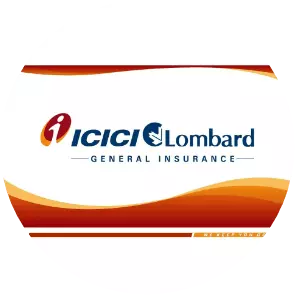Medical and Surgical Abortion Methods
-min.png)
Abortion is the termination of a pregnancy by the removal or expulsion of an embryo or fetus from the womb. Global statistics suggest that there are around 73 million abortions each year. These numbers are due to different reasons, including maternal health, an inability to afford a child, domestic violence, the feeling that they are too young to conceive, a lack of support, focusing on a career, and many others.
In any of the above cases, the WHO recommends a healthy abortion only after consultation with a health practitioner. From the statistics mentioned above, 45% of abortions are done unsafely. This may even put maternal health in danger.
A leading gynecologist at Matoshree, a multispecialty hospital and abortion center in Khanda Colony, Navi Mumbai, says, “Say no to pregnancy if that’s not what you want, but never take steps you don’t want to.”
Now, to understand different ways to get a safe abortion.
Types Of Abortion
There are two types of abortions, namely, induced abortion and spontaneous abortion.
1. Induced Abortion
When deliberate steps are taken to end a pregnaTypes Of Abortionncy, it is known as “induced abortion” or “induced miscarriage." There are multiple ways to purposefully terminate a pregnancy. Most of the time, the method chosen depends on how far along the pregnancy is and how big the embryo or fetus is getting. Certain operations may also be chosen based on what is legal, what is available in the area, and what the doctor or patient wants.
2. Spontaneous Abortion
Miscarriage, also called "spontaneous abortion," is when an embryo or fetus is thrown out by accident before the 24th week of pregnancy. Chromosomal problems in the embryo or fetus are the most common reason for a spontaneous abortion in the first trimester, accounting for at least half of all early pregnancy losses. Other causes include diseases of the blood vessels (like lupus), diabetes, other hormonal problems, infections, and problems with the uterus.
Methods Of Abortion
There are multiple methods of safe abortion. These include;
1. Medical Abortion
Medical abortion, which is also called "non-surgical abortion," is one way to end a pregnancy early without surgery. It can be done anytime between when a woman thinks she might be pregnant and when she knows for sure, which is nine weeks after her last period.
With the help of two pills, mifepristone and misoprostol, a medical abortion can be done. These pills can only be bought with a prescription from a doctor. It is against the law to sell them over the counter (OTC). If you are less than 11 weeks pregnant, your doctor might suggest that you get a medical abortion.
Some of the short-term effects of a medical abortion are
- Painful cramps
- Bleeding
- Nausea
- Vomiting
- Chills and fever
2. Suction Abortion
Suction and evacuation surgery involves opening or dilating the cervix and using a vacuum or suction to remove tissue from the uterus, or "evacuate" it. Suction and evacuation are also referred to as vacuum or suction aspiration. Most of the time, this method is used to take out the contents of the uterus through the cervix.
This procedure is employed to terminate a pregnancy that is between 12 and 16 weeks. It is usually associated with pain and discomfort. Suction abortion should be avoided by women with uterine function abnormalities, blood clotting issues, or pelvic disorders.
3. D&E
After the first trimester of pregnancy, dilation and evacuation (D&E) is the process of opening the cervix and removing the fetus, placenta, and other parts of the uterus through surgery. It is a method of terminating a pregnancy and a common method of removing all pregnancy tissue after a miscarriage.
D&E is a safe procedure when performed by an experienced practitioner. Short-term effects of this abortion are bleeding, infection, damage to nearby tissues, and a hole in the uterus.
4. Induction Abortion
When a woman is past the 24th week of pregnancy and can't get a D&E, she may need to have an abortion that is forced. Sometimes, an injection is used to stop the fetal heartbeat as the first step. After numbing the skin on your abdomen with a painkiller, a needle is used to inject digoxin or potassium chloride into the fluid around the fetus or into the fetus itself to stop the heartbeat.
Then, you'll be given medicine to start contractions and widen your cervix, which is the opening to your uterus. Misoprostol is a drug that can be taken by mouth or put in the uterus. This medicine can cause stomach pain, feeling sick, throwing up, diarrhea, fever, and chills.
5. Late-Term Abortion
Late-term abortions happen after the 20th week of pregnancy, when the fetus is thought to be able to live outside the womb. Late termination of pregnancy, which is also called late-term abortion, is when a pregnancy is ended by an induced abortion when it is already late in the pregnancy.
Most countries have laws against late-term abortions, and they can only be done if the life or health of the woman carrying the child is in danger. Late terminations of pregnancy can happen when a pregnant woman's health is in danger or when birth defects, such as ones that will kill the baby, are found.
Abortion Center In Navi Mumbai
Matoshree is an abortion center in the Khanda colony of Navi Mumbai. The experienced practitioners here initially perform several diagnostics, including pelvic analysis, ultrasound, blood tests, and tissue examinations. This gives them a proper picture of how old the embryo is and by which method it can be ejected.
They help at every stage of abortion, both physically and emotionally, to help women recover from such a big step. The average abortion cost in Navi Mumbai is anywhere from 10,000 to 40,000.
Abortion might be hard for you and can have a number of mental and physical side effects. It's normal to feel different things, such as shame, guilt, regret, or even relief. Make sure you have strong support or reach out to one of the many groups that can help.





















 (1).png)